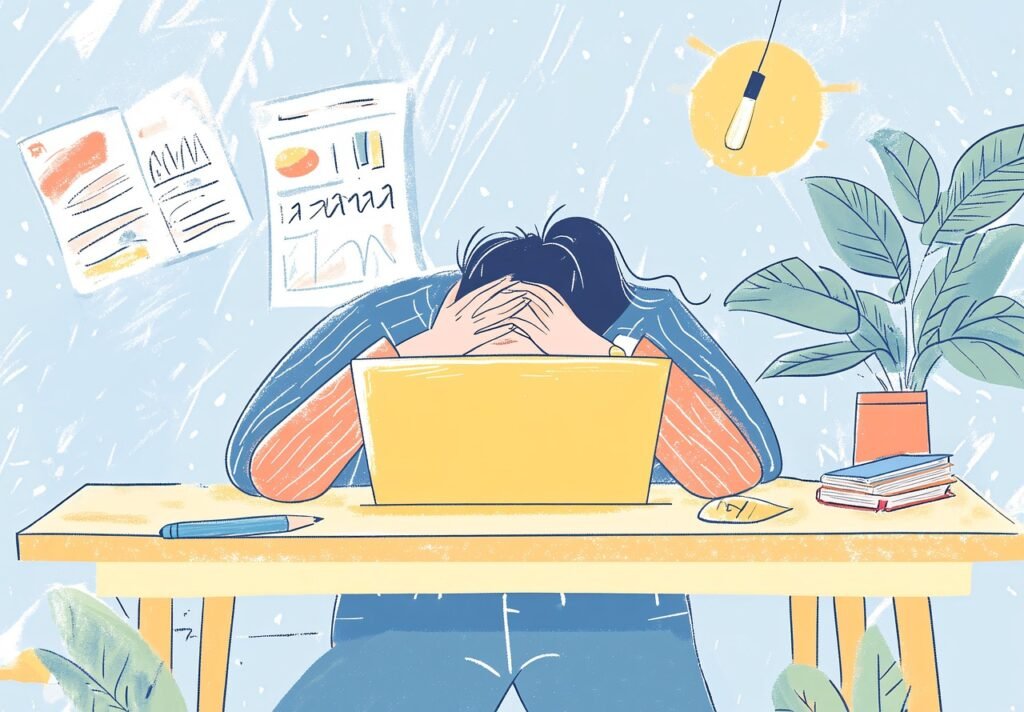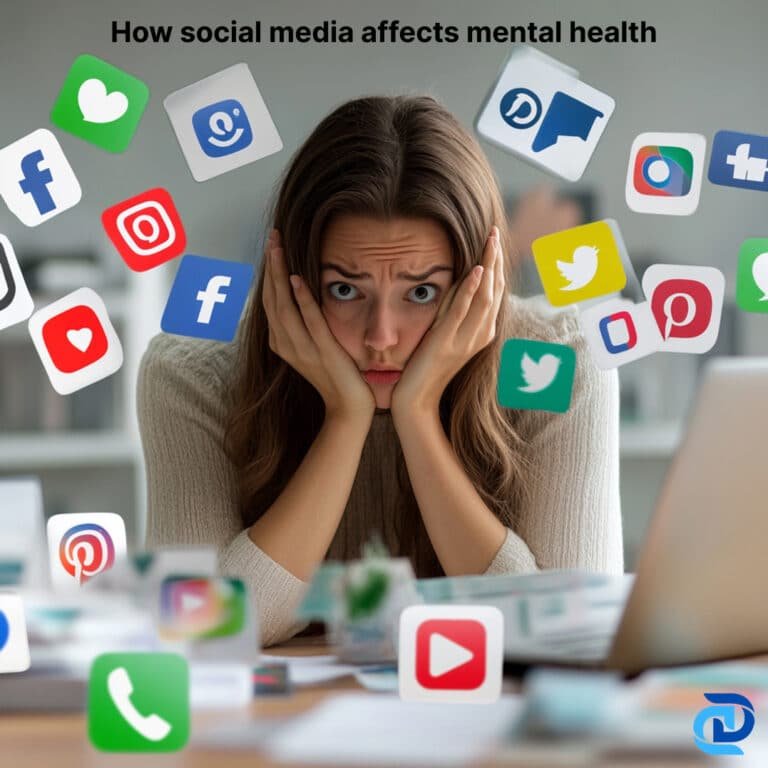Silent Burnout: The Mental Health Crisis No One Talks About

In the modern day and age of hustle, many people end up juggling responsibilities, working towards expectations both at work and outside of work. In all the hustle, one can easily overlook the quiet symptoms of burnout that seep in unnoticed. Silent burnout is unlike the open symptoms of burnout that require instant care, which stand out to scream for help, whereas silent burnout works behind the scenes without anyone realizing anything is wrong.
What Is Silent Burnout?
Silent burnout is a syndrome that quietly moves into a person’s life without them even knowing it. While classic burnout can show itself through obvious physical and emotional collapse, silent burnout is symbolized by persistent, low-grade stress and fatigue that doesn’t show up in dramatic or readily apparent forms. Rather, it quietly erodes a person’s health, making them feel depleted, overwhelmed, and emotionally disconnected over time.
What is so dangerous about silent burnout is how subtly it operates. Individuals who suffer from it tend to keep functioning, going through their daily activities, forcing themselves through their duties as if business as usual, unaware that they are running on empty. One can be mistaken in labeling the symptoms of silent burnout as something less serious, like a bad week at the office, some nights of sleep deprivation, or feeling blue. But the longer the passage of time, the greater the stress and emotional exhaustion take their toll on both body and mind in ways that are more difficult to undo.
The absence of overt, obvious symptoms means that people often ignore the early warning signs. They do not know that their waning motivation, growing irritability, or inability to get pleasure from activities they used to enjoy are all indicators of burnout. Silent burnout does not call attention to itself like more overt burnout would—there are no spectacular breakdowns or public tantrums. Rather, it simmers beneath the surface, manifesting as feelings of emptiness, anxiety, and mental confusion.
This type of burnout can also lead to emotional numbness. Individuals become detached from their work, their relationships, or even themselves, but without the clear breakdowns that individuals usually equate with burnout. The longer these signs are ignored, the more difficult it is to treat them. Silent burnout can result in a greater sense of depression, anxiety, and other mental health issues if not addressed.
It’s worth mentioning that silent burnout isn’t always the result of a single incident or stressor. Rather, it is often the product of multiple chronic stressors that accumulate over a period whether that be work-related, personal life, or even societal. These extended periods of stress don’t only break down an individual physically; they erode their emotional and psychological strength as well. For example, chronic pressure to perform, inability to disengage from work, and a constant feeling of duty can slowly create a foundation for burnout.
Since silent burnout does not always come with clear indicators, it’s simple for people to just keep going without seeing the cost it’s exacting. This can create a vicious cycle where individuals feel like they must just keep going, then discover that their mental stores are depleted, and they’re left at risk for more critical health concerns in the future.
Identifying the symptoms of silent burnout early may be the secret to reversing it before it becomes unsustainable. The first step in dealing with it is accepting that not all burnout is loud and abrupt sometimes, the most perilous burnout is the one that creeps in quietly and insidiously.
Hidden Signs of Silent Burnout
Early intervention is necessary to recognize the hidden indicators of burnout. Some of the indicators are:
Persistent Fatigue: Feeling exhausted even after getting enough sleep is known as persistent fatigue.
Reduced Motivation: A visible decline in interest in previously enjoyable activities.
Emotional Numbness: Feeling disconnected or detached from daily activities.
Irritability: Being more sensitive to small irritations.
Difficulty Concentrating: Having trouble concentrating or making decisions.
The Impact of Emotional Exhaustion
Emotional exhaustion is perhaps the deepest impact of burnout. This happens when one feels absolutely depleted, not merely physically but emotionally as well. When an individual is emotionally exhausted, he or she may feel that he or she has nothing left to offer, no strength to contribute to his or her own health, much less other people. Emotional exhaustion makes even the tiniest of tasks seem daunting. At work, emotional exhaustion can lead to a dramatic reduction in productivity and creativity since the person cannot muster the motivation or energy to address their duties.
Emotionally exhausted individuals can have chronic mood swings, where they may go from feeling irritable one minute to numb and distant the next. This moodiness can disrupt personal relationships, as family members or friends may not comprehend why someone who was once passionate and optimistic about life now appears reserved or cynical. There can be a lingering feeling of apprehension that makes it hard to anticipate anything, even activities that were enjoyed or rewarding.
Over time, this emotional exhaustion tends to develop into more serious mental health issues, such as depression and anxiety. The longer the exhaustion continues, the more difficult it is for people to recover from it without the assistance of professionals. If not treated, emotional exhaustion can form a vicious cycle, where hopelessness and negativity further deplete the person, making it even more difficult to escape the burnout.
Causes of Silent Burnout
Silent burnout does not occur overnight, it’s the culmination of multiple factors, which are commonly being built up over time without being effectively addressed. Listed below are some of the most prevalent reasons that help bring about the development of silent burnout:
Workplace Pressures
In the current hectic workplaces, workers are often required to work under tight deadlines, handle heavy loads, and produce high-quality outputs with minimal support. This pressure becomes the breeding ground for a poisonous work culture, and stress becomes a permanent friend. This pressure becomes so much a part of their daily routine that even they do not perceive its psychological costs. With time, the repetitive pressure results in burnout signs like emotional depletion, irritability, and reduced overall productivity.

Perfectionism
Most people with silent burnout battle perfectionism a state of mind where they create unrealistically high expectations for themselves. This incessant drive to excel ends in perpetual self-blame, discontent, and terror of failure. Rather than basking in the glory of minor victories, they dwell on what wasn’t done right or how better it could have been done. Gradually, this self-inflicted pressure grows unbearable, leading to feelings of inadequacy and heightened stress levels.
Lack of Work-Life Balance
A significant cause of silent burnout is the inability to balance work and personal life effectively. With constant connectivity through emails, social media, and digital notifications, many people find it difficult to “switch off.” They feel compelled to answer work-related emails or messages outside of business hours, leaving little room for relaxation or self-care. This mixing of the professional with the personal can create chronic stress, wherein the person never really gets a respite to recharge. This absence of breaks can eventually result in burnout, as the body and mind are constantly in overdrive.
Neglecting Self-Care
Self-care tends to be the first casualty when people feel besieged by their tasks. Whether skipping meals, neglecting exercise, or sacrificing sleep for deadlines, one’s physical and mental health is paid the ultimate price. Eventually, this cost adds up with the accumulation of more stress, decreased energy levels, and poor concentration. When individuals prioritize work or responsibilities over their own well-being, burnout is certain to follow. Taking care of oneself is not a privilege it’s the key to being healthy and mentally sound in the long term.
How to Deal with Silent Burnout (Before It Breaks You)
Silent burnout is avoidable and can be managed through conscious action. Below are some of the most important strategies to restore equilibrium and safeguard your well-being:
1. Set Boundaries
Establish clear working hours and maintain them. Refrain from checking emails or accepting work calls after work hours to safeguard personal time and ensure it is restful.
2. Prioritize Self-Care
Schedule time for activities that enrich your body and mind—exercise, hobbies, restful sleep, and times of relaxation. Self-care isn’t a luxury; it’s necessary.
3. Seek Support
Discuss with supportive friends, relatives, or a mental health specialist. Expression of feelings and gaining outside insights can relieve emotional stress and lead to recovery.
4. Practice Mindfulness
Remain in the moment with mindfulness practices such as meditation or breathing exercises. These exercises diminish stress and promote emotional strength.
5. Evaluate Workload
Review your duties on a regular basis. Don’t be afraid to delegate, seek assistance, or say no when feeling overwhelmed. Prioritizing your workload prevents burnout before it becomes a problem.
Final Thoughts
Quiet burnout isn’t clamorous. It doesn’t bust in like an emergency, it slowly sneaks in and gets hold of you before you even know it.
So, if you’ve been feeling funky, disconnected, or perpetually drained, don’t brush it off. Pay attention. Hear your body. Burnout is not a weakness it’s the result of you being strong too long without getting any help. Breathe. You can stop. You’ve earned to rest. You’ve earned peace.





